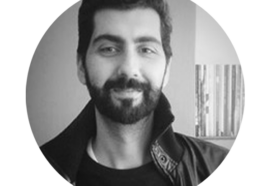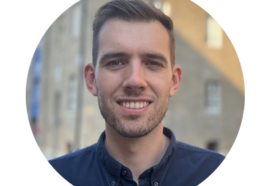In this ‘Insights from the OxWell Student Survey’ episode, Dr. Simona Skripkauskaite and Dr. Holly Bear comment on the findings from the OxWell survey regarding online behaviours and the association with young people’s mental health and wellbeing.
The ‘Insights from the OxWell Student Survey‘ series is a new mini-in conversation series that will explore the OxWell study and the impact of its findings for parents, teachers, policymakers and mental health professionals.
Discussion points include:
- Adolescents’ self-reported online behaviours and the specific variables investigated.
- The association between online behaviours and anxiety and depression symptoms.
- Associations between screen time, the type of content being accessed, and mental health.
- Differences across age and gender.
- The type of analysis used, and plans for implementing and disseminating the findings.
OxWell is a large-scale student survey designed to measure the wellbeing of children and young people. It looks at mental wellbeing, anxiety, indicators of vulnerability such as bullying and loneliness, school experience, access to services, safety online and many more areas. It is a joint effort between schools, young people, the NHS, local authorities and the OxWell research team at the University of Oxford’s Department of Psychiatry.
Subscribe to ACAMH mental health podcasts on your preferred streaming platform. Just search for ACAMH on; SoundCloud, Spotify, CastBox, Deezer, Google Podcasts, Podcastaddict, JioSaavn, Listen notes, Radio Public, and Radio.com (not available in the EU). Plus we are on Apple Podcasts visit the link or click on the icon, or scan the QR code.

I am a senior postdoctoral researcher in the Department of Psychiatry. Using mixed methods, my research focuses on the evaluation, implementation, and sustainability of mental health and wellbeing interventions for young people, with a particular focus on digital and school-based interventions. I am leading the Bridging the Gap Project to investigate the barriers and facilitators of implementing research into practice in child and adolescent mental health settings in order to make recommendations across clinical, commissioning, and academic settings. (Image and bio from Department of Psychiatry, University of Oxford)

Dr. Simona Skripkauskaite is a Senior PostDoctoral Researcher working across the departaments of Psychiatry and Experiemental Psychology at the University of Oxford. Specifically, she works with the Oxford’s Co-SPACE study (COVID-19: Supporting Parents, Adolescents and Children During Pandemics) and the OxWell Student Survey. Dr. Skripkauskaite is also the UK lead on an ESRC/JSPS funded project on ‘Learning from the trajectories of mental health challenges for children, young people and parents over the course of the Covid-19 pandemic’, which will compare how families have been affected by the pandemic in the UK and Japan. Overall, Dr. Skripkauskaite’s research to date has aimed to identify developmental processes underlying successful functioning, but has ranged across child and adolescent mental health, emotion regulation, and parent-child relationships, as well as neurodiversity, visual attention, and perception.
Other resources
- Episode 1 – ‘Networks of Care: Insights from the OxWell Student Survey’, with Professor Mina Fazel, Dr. Emma Soneson, and Dr. Simon White
- Episode 2 – ‘Friendships and Mental Health: Insights from the OxWell Student Survey’, with Tanya Manchanda
- Episode 4 – ‘Self-harm Behaviours and Loneliness: Insights from the OxWell Student Survey’, with Dr. Galit Geulayov and Dr. Rohan Borschmann
Transcript
[00:00:01.449] Clara Faria: Hello, welcome to the Insights from the OxWell Student Survey, Series for the Association for Child and Adolescent Mental Health, or ACAMH for short. This is a new, mini, In Conversation series that will explore the OxWell Study and the impact of its findings for parents, Teachers, policymakers and mental health professionals. I’m Claria Faria, an ACAMH Young Person Ambassador and today, I have the pleasure of interviewing Dr. Holly Bear and Dr. Simona Skripkauskaite, both Senior Researchers at the OxWell Student Survey.
OxWell is a large scale student survey, designed to measure the wellbeing of children and young people. It looks at mental wellbeing, anxiety, indicators of vulnerability, such as bullying and loneliness, school experience, access to services, safety online and many more areas. It is a joint effort between schools, young people, the NHS, Local Authorities and the OxWell Research Team at the University of Oxford’s Department of Psychiatry.
In this episode, we will focus on adolescents’ online behaviours and the association with young people’s mental health and wellbeing. If you’re a friend of our In Conversation series, please subscribe on your preferred streaming platform, let us know how we did, with a rating or review, and share with friends and colleagues.
Welcome, Holly and Simona, it is really lovely to see you both again. Can you start with an introduction, giving a short overview of what you do, please?
[00:01:44.520] Dr. Holly Bear: Hi, Clara, it’s a pleasure to join you today and thanks very much for having us. I am a Researcher at the university of Oxford and my research focuses on the evaluation and implementation of mental health and wellbeing interventions for young people, with a particular focus on digital and school-based interventions. And I work across several different projects, including the OxWell Student Survey.
[00:02:04.900] Dr. Simona Skripkauskaite: Indeed, it’s lovely to be here. My name is Dr. Simona Skripkauskaite and I’m a Researcher in Developmental Child and Adolescent Psychology at the University of Oxford. Like Holly, I work across a few different projects, including the OxWell Study, but, overall, my work tries to understand child and adolescent mental health and successful functioning, under different circumstances and contexts, such as during the pandemic, online, or in relation to neurodiversity.
[00:02:28.890] Clara Faria: That’s really interesting, thank you. And I wanted to start by asking, adolescents are more connected than ever before, and this shift in how they use technology has raised widespread concerns about the relationship between general screen time or social media use and adolescent mental health. In the OxWell Survey, which specific variables did you investigate? And what did you discover about adolescent self-reported online behaviours?
[00:02:57.280] Dr. Holly Bear: Yes, that’s right. I think social media is an integral component of adolescents’ daily lives and has rapidly transformed the ways in which adolescents socialise, interact with their peers, and with the wider world. And there’s also a, kind of, growing public discourse, I guess, raising concerns about the role of social media use in the documented increase of adolescent mental health difficulties. So, I think, understandably, this has left many parents and educators and mental healthcare providers with questions about how best to advise and support adolescents on their social media use.
So, in a sample of over 14,500 12 to 16-year-olds, who completed the OxWell Survey in 2021, we mapped adolescents’ online behaviours. So, including things like time spent on social media, frequency of social media use before sleep, school night screen time rules, exposure to self-harm content online, and meeting an older person alone, who is first met online, and things like posting content that was later regretted, and accessing mental health support. We then conducted analyses to determine if there’s a relationship between those online behaviours and anxiety, depression and loneliness.
And in terms of some, kind of, key findings from that, but 73% of adolescents reported that they’d use social media in the hour before they intended to go to sleep, either daily, or at least three to four times per week. In total, about 15% of adolescents reported that they’d met a person, in the real world, that they’d first got to know online. But somewhat reassuringly, less than 1% reported that this person was older or an adult and that they’d met them alone. And then, nearly 20% of the sample had posted or done something on the internet that they later regretted. So, of those, about 65% reported this was a photo or a video of themselves, and about 32% regretted a public comment. And then, finally, nearly half reported that they’d seen self-harm content online, so, quite surprising, actually.
[00:04:50.000] Clara Faria: Yes, those are quite concerning figures. Simona, as Holly mentioned, you looked at the association between various online behaviours and anxiety, depression and loneliness. Could you comment a bit more on those findings? Does it make a difference what type of content young people are accessing in terms of those associations?
[00:05:11.660] Dr. Simona Skripkauskaite: So, I believe it does and that is a big part, what drove our motivation for the study, as Holly mentioned. There is a bit of a public panic on how social media use relates to mental health. After all, we do have an increase in mental health symptoms reported by young people and we all, including the young people, are spending more and more time online. So, it’s easy to assume a causal link given this correlation.
However, the research findings on it are quite mixed, and very inconsistent, and that is likely to be, at least in part, because we tend to look at social media use as time spent using social media only, or looking at one specific social media related activity at the time, rather than reflect on how the young people are using it, or what they’re doing online. So, we wanted to investigate how the relationships between time spent on social media and other online related activities, that Holly nicely mentioned just before, relates to mental health when taken together.
We found that there was a direct and positive association between time spent on social media and anxiety and depression or loneliness, but that was really small and inconsistent between our different groups. Instead, we found stronger, albeit stock, kind of small to medium positive affect between these mental health symptoms and exposure to self-harm content online, engaging in online activity that was later regretted, or seeking support online.
What this suggests is that, particular online activities that young people engaged with, does relate more to young people’s anxiety and depression and loneliness, in comparison to how much time they are spending on social media. Although, it is important to note, that no way these findings are pointing to causal relationships. And that the strength of these associations might indicate that there’s much more happening in these young people’s lives that would explain the variability in their mental health even better.
[00:07:01.270] Clara Faria: And, in your analyses, did you find any differences across age and gender? For example, are girls more vulnerable to the content they are exposed to online? And last, does it make a difference if a person is exposed to harmful content online at a younger age, compared to being exposed later in adolescence?
[00:07:22.570] Dr. Holly Bear: Yeah, thank you, those are interesting questions. So, we had actually hypothesised certain groups of adolescents may be particularly at risk for increased anxiety and depression symptoms, and loneliness, due to their online activity. So, in terms of gender, we didn’t actually find any evidence of differences between females and males in the hypothesised direct pathways between time spent on social media, and anxiety and depression symptoms and loneliness.
In fact, when split by gender, the previously weak associations between social media, and anxiety and depression symptoms and loneliness became insignificant. On average, females reported higher depression, anxiety and loneliness and social media use than males, suggesting group differences in new level scores, rather than associations. There were females who more frequently use social media before sleep and who are exposed to self-harm content online, were more susceptible to higher levels of anxiety, depression and loneliness than males.
[00:08:14.349] Dr. Simona Skripkauskaite: But we have also investigated how these [inaudible – 8:16] associations differed between the year groups. So, specifically we looked at English year groups eight and nine, so that’s 12 to 14-year-olds, and year groups ten and 11. So, including 14 to 16-year-olds, approximately. There was one notable difference in theses associations, so, specifically between time spent on social media and loneliness, and that association was only present in younger, but not older adolescents, suggesting that, maybe, lonelier, younger adolescents tend to seek social connection online, more than older ones do.
[00:08:48.950] Clara Faria: Simona, could you go a bit more into detail, for our audience, about type of analysis you used to study the association between online behaviours and mental health? What type of model did you build to study those associations?
[00:09:03.079] Dr. Simona Skripkauskaite: So, we used structural equation modelling, or path analysis more specifically. We built the model based on what previous literature, looking at single or fewer online activities, suggested maybe affecting the adolescent mental health. For instance, we expected that things like having screen time use rules in the household, or using social media before sleep, as well as seeking help online, exposure to self-harm content, regretting online activity, meeting strangers online would always relate to both time spent on social media and mental health symptoms in terms of anxiety and depression or loneliness. And that there may be direct relationships between time on social media and mental health too.
It’s worth noting that the OxWell Survey collects cross-sectional data, meaning that we are not collecting repeat data on the same individuals over time. However, we have rich data, from many adolescents across England, who may not participate in other research, giving us somewhat of an insight into somewhat unrepresented communities. So, due to this richness, we could estimate how all these different online behaviours relate to mental health in one another, simultaneously, and how they are different between different groups, like age, gender and history of self-harm.
[00:10:16.360] Clara Faria: That’s really interesting, and definitely a huge strength of the OxWell Surveys. Moving forward, your findings on online behaviours and its impact on young people have a huge importance and are of interest for Local Authorities, Commissioners, parents, and, Holly, I know you’ve done some really nice work with implementation, do you have any plans for implementing and disseminating those findings from the OxWell Student Survey?
[00:10:42.050] Dr. Holly Bear: Yes, we absolutely do. So, these findings are presented in a paper that will hopefully be published in the coming months, so do watch this space for that. We will also create accessible summaries of our findings to accompany the paper, which will be made available on the OxWell website and our various social media channels. But, I think, although, kind of, understanding and unpicking the various contributing factors is quite challenging here, it’s not straightforward, it’s not a straightforward picture, and the solutions are certainly not straightforward.
We’ve taken together our findings from this paper and these analyses, with the relevant previous literature, as well as feedback from stakeholder involvement. So, we’ve spoken to Teachers, for instance, to generate some key suggestions about how best to support adolescents to use the internet and social media in an adaptive and enriching way. So, for instance, it may be that rather than just imposing general, kind of, blanket restrictions on social media use, psychoeducation in homes, and in schools, regarding some of the potential negative impacts, and some of the risks, of certain online behaviours is needed. And then, through those recommendations provided, we hope that they can gain a better understanding of the full impact of social media, so that we can maximise the benefits and minimise the harms of social media platforms to create safer, healthier, online environments for adolescents.
[00:11:57.220] Clara Faria: And when looking at the data, did anything surprise you? Were there any findings that were not in line with the hypothesis you initially made?
[00:12:05.620] Dr. Simona Skripkauskaite: A few things actually did. So, for instance, previous research would suggest that having rules when the screens should be switched off in the house, and relatedly, screen time use before sleep, would both be associated with increased mental health symptoms, or decreased mental health symptoms. We found that, unsurprisingly, they both related to how much time the adolescents were spending using social media, but neither was related to anxiety or depression or loneliness directly, when the other behaviours were accounted for. We did also find that only a tiny proportion of adolescents, less than 1%, of our participants reported being involved in risky behaviours, such as meeting an older online stranger in person alone. We were afraid that this behaviour may be a bit more common nowadays, with all the sort of time that people are spending online, so it was really reassuring to see that was not the case.
[00:12:56.690] Dr. Holly Bear: Yeah, and I think, for me, it was really the fact that explicit, and potentially traumatic, content continues to be easily and widely accessible for adolescents. So, nearly half of adolescents in the current OxWell sample reported that they’d seen self-harm content online, which was related to higher depression, anxiety and loneliness across all groups examined. So, I think that technology companies, including app companies, can play an important role in designing safer online environments, prioritising user safety, and minimising the risks associated with exposures to certain content on social media as a result of, kind of, algorithm drive content.
[00:13:35.339] Clara Faria: That’s really interesting and definitely a concern for parents, and the children, I think society, as a whole. Thank you so much for your time, Holly and Simona. And last question, looking to the future could you share a bit more about your plans for the next OxWell waves, regarding online behaviours and social media use in adolescents?
[00:13:55.389] Dr. Simona Skripkauskaite: Yes, we do have a few exciting things planned. So, we have just finished collecting data for the 2023 wave, a few months ago, where we have introduced additional questions on things like socialness of different online and screen activity such as gaming. And collected more in-depth data on why, and how, adolescents are exposed to self-harm content online. So, very excited to delve deeper into the pattern of behaviour there and learn what we need to do to protect the young people better.
[00:14:24.150] Dr. Holly Bear: Yeah, I agree with Simona, I think it’s really important, for the field to move forwards, that we move away from this kind of reductionist approach, that sees social media as merely helpful or harmful, and, instead, consider the nuances of, I guess, for whom, and in what ways, and when social media affects mental health outcomes. So, I think this includes really thinking about a broader range of moderation indirect affects when doing research and, kind of, expanding on the more traditional risk and protective factors that we look at. So –including various forms of parental involvement.
So, while it might not just be about restricting use, it could be other things like parental engagement to explore and learn things on the internet and, kind of, better parental understanding of the types of websites and apps that are being accessed to inform discussions with their children, kind of, open communication about their internet use and experiences, and explicit content. And, I think, as Simona said, these are all questions that we’re exploring and looking into, in more detail, in OxWell, both in 2023 and in future iterations of the Survey.
And I guess the final thing to mention, in our work, we’re also increasingly thinking about the implementation and evaluation, promising intervention approaches, designed to reduce more unhelpful online behaviour, such as regretting posting content online, and encourage more adaptive behaviour. So, yeah, I guess watch this space for those things too.
[00:15:44.399] Clara Faria: Thank you so much to both of you, it was a really interesting conversation, and for more details on Dr. Simona Skripkauskaite and Dr. Holly Bear, please visit the OxWell and ACAMH websites. You can find ACAMH website at www.acamh.org and OxWell at oxwell.org. We also have a Twitter, which is @acamh. ACAMH is spelt A-C-A-M-H, and do keep an eye out for other podcasts in the Insights from the OxWell Student Survey series, including episodes on friendship, self-harm, sleep and more. And don’t forget to follow us on your preferred streaming platform, let us know if you enjoy the podcast, with a rating or review, and do share with friends and colleagues.




